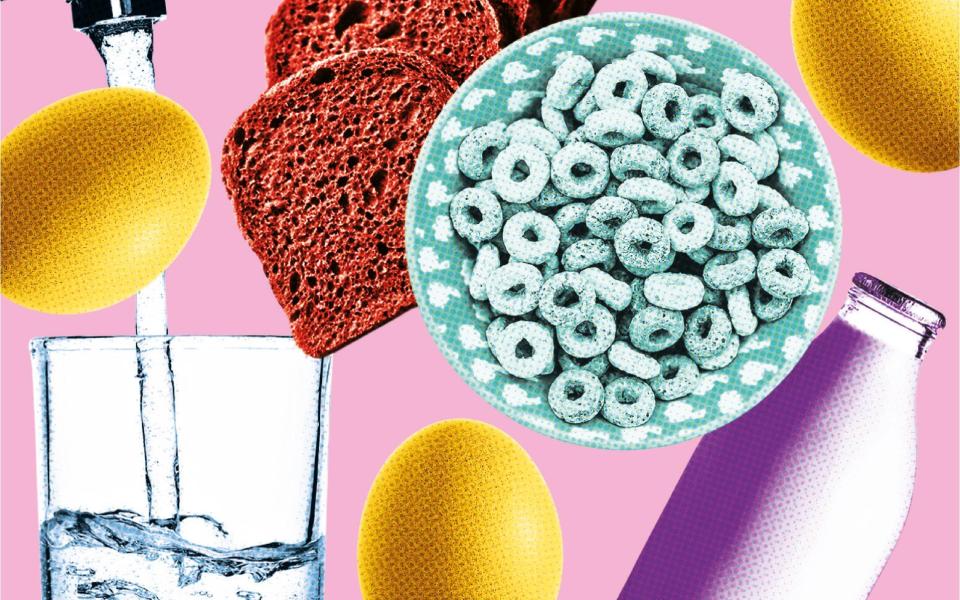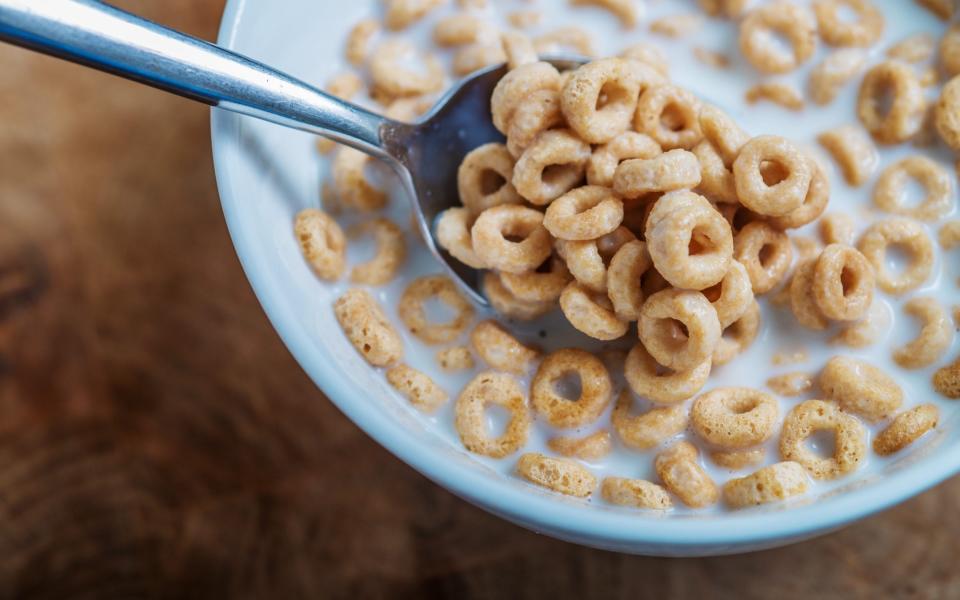Is the trend for fortified food really good for our health?

Soon your morning slice of toast will be medicine as well as food. After a two-year consultation, the Government has announced all white and brown flours in Britain must be boosted with folic acid – a manufactured version of vitamin B9 or folate.
The decision has been widely welcomed, given an estimated 200 potentially life-threatening spinal conditions in babies, such as spina bifida, will be avoided each year as a result. Doctors advise women to start taking folic acid supplements at least a month before conception, but around 50 per cent of pregnancies in the UK are unplanned.
The mandatory addition of folic acid to flour – one of the most widely consumed ingredients in Britain – has been a success in 80 other countries including Australia, New Zealand and Canada. And in the US, neural tube defects have dropped by 35 per cent since the mandatory fortification of cereal grains with folic acid in 1998.
In Britain, it’s the latest chapter in a long history of tweaking, boosting and reformulating food to make it more nutritious, which began in 1940 when the Government called for vitamins A and D to be added to margarine due to predicted wartime butter shortages. White flour was fortified with calcium in 1941 when dairy products were scarce. And in the Fifties it became mandatory to add iron, thiamine and niacin to flour – regulations that remain in place today.
Most nutrition experts agree that fortifying food can be an important way to prevent nutritional deficiencies and related diseases, especially among vulnerable groups. In fact, many of us now rely on it. The British Nutrition Foundation estimates fortified breakfast cereals, for example, contribute up to 30 per cent of average iron and 24 per cent of vitamin D intakes in the UK.
Vegans particularly benefit, as their only reliable sources of vitamin B12 – apart from supplements – are fortified foods like plant milks and breakfast cereals. Foods enriched with healthy omega-3 fats not only benefit vegans and vegetarians, but others (again, that’s many of us) who don’t consume enough rich sources like oily fish.
Professor Ian Givens, director of the Institute of Food, Nutrition and Health at Reading University, supports the mandatory fortification of flour with folic acid and adds there’s also a good argument for fortifying dairy products with vitamin D, as research suggests one in five people in the UK don’t get enough (Low vitamin D levels are linked to a higher risk of conditions such as rickets).
But, in recent years, food manufacturers have started pumping a vast array of foods from milk and yogurt to cereals and even bottled water with added vitamins, minerals and other nutrients. Sometimes, this is to restore nutrients lost during processing, for example, during the milling of wheat for flour. Food companies also enrich products to give them a “health halo”, when they‘re actually high in sugar, salt and unhealthy fats.
Protein powder is now included in a vast array of foods from chocolate to ice cream, even though, as a nation, we consume more than enough in our diet.

In recent years, food manufacturers have also started adding fibre to everything from pizza bases to yogurt. While most of us need to consume more fibre because it is firmly linked to a reduced risk of chronic diseases such as type 2 diabetes, cardiovascular disease and bowel cancer, fortified foods are probably not as beneficial as consuming it in its natural form. By eating fibre-rich green vegetables and whole grains, for example, you benefit from the vitamins, minerals and other nutrients as well, according to Prof Givens.
“I think the case for fortification needs to be strong, with evidence that it involves a key nutrient that is not likely to be consumed in anywhere near adequate amounts from typical diets,” Prof Givens says.
In his book, The Mindspan Diet, Harvard Medical School geneticist Dr Preston Estep argues consuming too much iron through fortified foods or supplements can increase the risk of type 2 diabetes, Alzheimer’s and Parkinson’s disease, especially in people over the age of 40.
Nutritionists stress that most of us don’t need to worry about overdosing on nutrients, and fortified food is vital for some groups of people. But they add that food pumped with extra vitamins, minerals and other nutrients is generally no substitute for a good diet – or cure for a poor one.
Bread: By law, non-wholemeal bread must be fortified with calcium, iron, thiamin, niacin – the nutrients that are removed with the bran during the milling of wheat – and soon, all flour will have folic acid, too.
Dairy: In recent years, some milk and yoghurt producers have added vitamin D and/or omega-3s, a group of essential fats. Many, but not all, plant-based ‘mylks’ are fortified with calcium and vitamins B2, B12 and D – nutrients naturally found in dairy milk.
Eggs: Yolks naturally contain vitamin D, but the low levels are often enriched by giving hens vitamin D and/or omega-3 supplements in their feed, in the form of flaxseed (linseed) or microalgae.
Breakfast cereals: Kellogg's claims to have been the first, when it added B vitamins and vitamin D to its “Pep” cereal in 1938. Some nutritionists argue fortified cereal is a valuable source of nutrients for people who don’t eat a balanced diet, or for groups with specific requirements, such as teenage girls, for whom iron deficiency is a concern. Others believe these benefits don’t outweigh the negative effects of cereals laden with sugar, fat or salt.
Fruit juice: With growing consumer awareness that fruit juice can contain as much sugar as fizzy soft drinks, manufacturers have been keen to boost the health credentials of their products. The vitamin C content of fruit quickly degrades during processing, so extra is often added, alongside other vitamins, calcium and omega-3s.
Water: Fluoride is a naturally occurring mineral found in water in varying amounts, depending on where in the UK you live. Around 5.8 million people in England receive fluoridated tap water, to bring it up to around 1mg of fluoride per litre of water, which is a level found to reduce tooth decay.
Why making your own bread is one of the healthiest things you can do
Andrew Whitley, founder of the Real Bread Campaign, Bread Matters and Scotland The Bread

Folic acid aside, making your own bread is a brilliant thing to do and it’s not a hipster monopoly – it’s what ordinary people have done, all over the world, for thousands of years.
Home-baked bread has a number of health benefits, both mental and physical. As many people discovered during lockdown, it’s a fun and fulfilling craft: baking bread is much more satisfying than simply buying it from a shop. Having first made my own loaf of bread about 50 years ago – and millions more over 25 years as a full-time village baker – I still get a kick out of taking a loaf out of the oven.
By making your own bread, you can control an important part of your diet and avoid the ultra-processed loaves that you might find on supermarket shelves. Most of these are made with highly refined flour that’s been stripped of important nutrients plus a host of opaquely-described additives and processing aids that aren’t there for the eater’s benefit. Serving up your own nutritious, filling, home-made bread can take pressure off both your belt and your budget.
There is an important connection between gut health and mental health (the gut-brain axis is mediated by our diet) and we can get the diverse good bacteria we are missing by using more wholemeal flour in our bread. You need to ferment your dough for several hours to get all the benefits, one of which is a doubling of the amount of natural folic acid in the bread without synthetic fortification.
Choosing your own bread flour also lets you buy from agroecological farmers who respect soil, biodiversity and the health of their fellow citizens.
Real home-made bread needs only a few ingredients: flour, water, yeast, perhaps a little salt – and time, of course. Real bread ferments well while you’re busy doing other things.
Home-baked bread can also be economical, enabling you to save money and reduce waste. The Government’s statistics from WRAP (Waste & Resources Action Programme) show that about a third of shop-bought bread is wasted before it’s eaten. But nobody who bakes their own bread is going to throw it away – if you make your own bread, you’re going to love it and look after it like a newborn, because it’s something precious that you’ve made yourself.
As told to Claudia Rowan

 Yahoo News
Yahoo News 